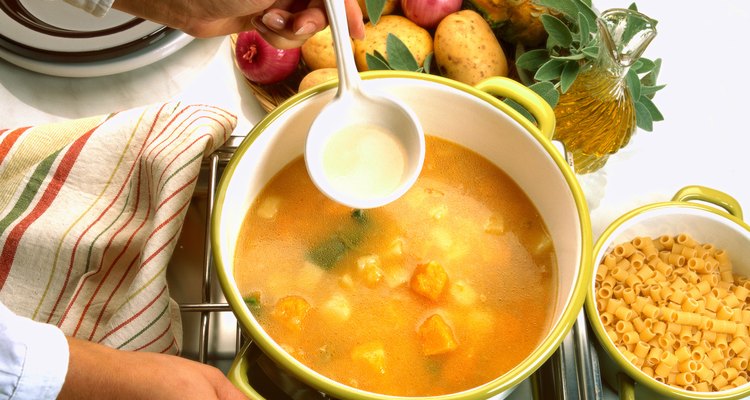
Slow cookers heat so slowly and gently that you can leave the house or go to sleep without worrying about burning your stew. Slow cooking stew in a pot on the stove top may take a bit more attention, but it doesn't require a separate appliance that takes up precious storage space when you aren't using it. Additionally, stove-top slow cooking probably creates fewer dirty dishes. After searing your meat and before adding your liquid and other ingredients, you can just continue using the same pot.
The Right Stew
Some stews work better than others for slow cooking on a stove top. Unlike a slow cooker, which supplies heat from both the bottom and the sides, a stew pot only receives heat from the bottom. This concentration of ongoing outside heat at the bottom of the pot makes it much easier to burn a stew on the stove top than in a slow cooker. The thicker a stew, the greater the likelihood it will burn, so choose stews with sufficient liquid to reduce this risk. A thick, tomato-based stew such as chili may be tricky to cook on the stove top, while a broth-based stew like Irish stew is less likely to burn.
The Right Pot
All stew pots are not created equal. Enameled Dutch ovens hold heat more evenly than thin aluminum stockpots, and this difference can be critical when slow cooking a stew on the stovetop. Choose any solid, thick-bottomed pot made from a high-quality material such as cast iron or stainless steel. Make sure your pot has a tight-fitting lid: Covering the pan will contain the heat, allowing your stew to heat from the top as well as the bottom.
The Right Heat
Use very low heat when slow cooking stew on the stove top. Use higher heat initially, stirring almost constantly, but once the meat is seared and the other ingredients are hot enough to simmer, use the lowest heat level you can maintain. Some stoves have burners that cook hotter than others; if you know this about your stove, choose the burner that will cook your stew at the lowest heat.
Pay Attention!
Stews need to be stirred, though they don't need ongoing attention after the initial phase. To start a stew, cook some components such as meat and onions on relatively high heat before adding the liquid and other ingredients, bringing the mixture to a boil, and then lowering the heat. Check and stir your stew every 5 to 10 minutes at first. Gauge how quickly it is cooking and starting to stick, and adjust your stirring intervals accordingly. If some stew burns on the bottom of the pot, transfer the food to another pot without scraping and including the burnt part. Check your stew more regularly as it starts to cook down and thicken. Most stews will slow cook completely on the stove top in 2 to 3 hours.
Related Articles
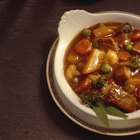
Can I Cook Beef Stew in a Slow Cooker ...

The Difference in a Pot Roast and a ...
Does Slow Cooking Take Nutrients Out of ...

What Does It Mean When Milk Curdles ...

What Is the Best Cookware for Electric ...

How Long to Slow Cook Eye Round Roast ...
How to Cook Venison So it Doesn't Get ...

Can You Use Flour to Thicken Chili?
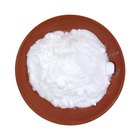
How to Get Rid of the Acid Taste in ...

Rules for Cooking Pot Roast

Does Alcohol in Beer Cook out in the ...

How to Cook Silverside on a Stove Top

Can I Cook Chicken & Pork Together in a ...

Different Cuts of Steak

Is There Still Alcohol in Beer-Boiled ...
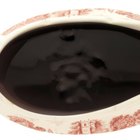
How to Make Gravy From Gravy Mix

Do You Use Flour or Corn Starch to ...
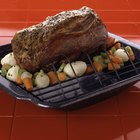
Different Ways to Cook Chuck Roast Beef

What Kind of Pan Can I Use to Cook a ...

How to Cook Bison Burger
References
Writer Bio
Devra Gartenstein is a self-taught professional cook who has authored two cookbooks: "The Accidental Vegan", and "Local Bounty: Seasonal Vegan Recipes". She founded Patty Pan Cooperative, Seattle's oldest farmers market concession, and teaches regular cooking classes.
Photo Credits
Stockbyte/Stockbyte/Getty Images